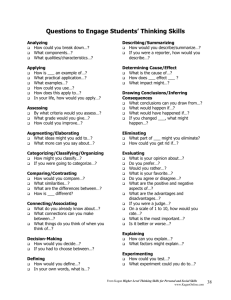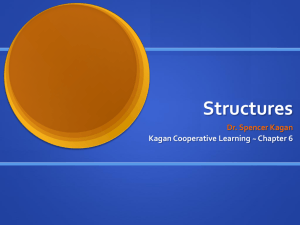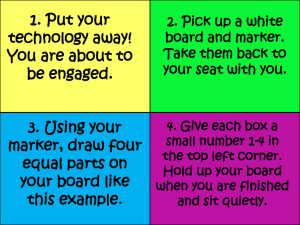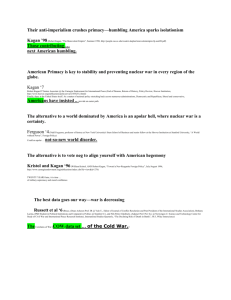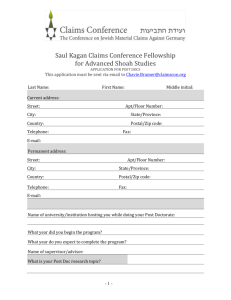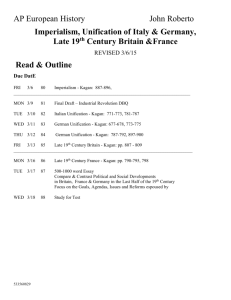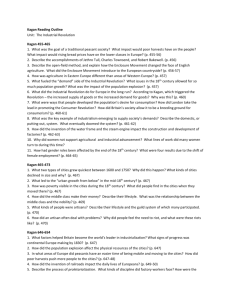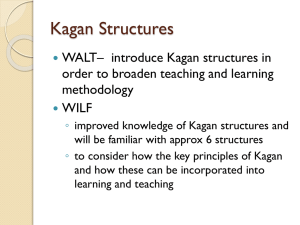Adventures in Vocabulary - Literacy Action Network
advertisement
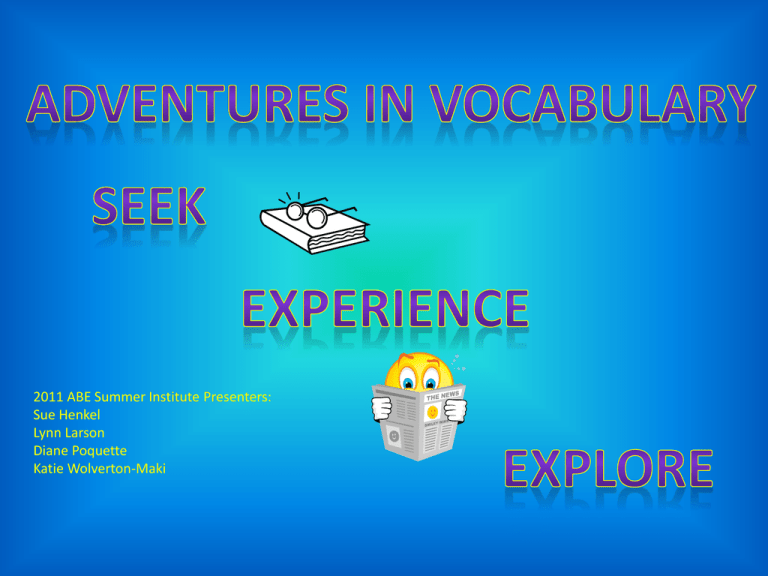
ADVENTURES IN VOCABULARY 2011 ABE Summer Institute Presenters: Sue Henkel Lynn Larson Diane Poquette Katie Wolverton-Maki Welcome • Introductions Restrooms • Timeline Objectives Objectives • Lead vocabulary instruction utilizing a variety of methods • Expand students’ vocabulary knowledge and word relationships • Create a vocabulary routine within your classroom Think-Pair-Share • What advice would you give to a new teacher as he/she begins to address vocabulary instruction in their classroom? 1. … 2. … 3. … Parking Lot Experts in Vocabulary Instruction • • • • • • Dr. Janet Allen Dr. Camille L. Z. Blachowicz Dr. Mary E. Curtis Dr. Kathy Ganske Laurie Kagan & Dr. Spencer Kagan Dr. Robert Marzano Dr. Janet Allen Words, Words, Words… Renowned expert in vocabulary strategies: – Activate prior knowledge – Make learning meaningful and lasting – Build concept knowledge – Use structural analysis – Utilize words in context Best Practices in Vocabulary Instruction by Dr. Camille L.Z. Blachowicz Vocabulary learning takes place when students are: 1. Immersed in words 2. Active in discovering ways in which words are related to experiences and related to one another 3. Able to personalize word learning 4. Learning vocabulary from multiple sources of information 5. Able to gain control over their own learning 6. Able to develop independent strategies Dr. Mary E. Curtis • Student Achievement in Reading (STAR) for intermediate adult basic education students • Reading Is FAME: Diagnosis and remediation of at-risk students’ reading skills, Boys Town Reading Center Dr. Kathy Ganske (Word Sorts) • Researcher of word learning and comprehension, teacher preparation and effectiveness, and student achievement in literacy instruction • Assessment-driven vocabulary instruction • Author and coauthor of several books Laurie Kagan & Dr. Spencer Kagan Researchers of Cooperative Learning 1. 2. 3. 4. Think-Pair-Share Four Corners Post-It Parking Lot Entry/Exit Ticket Dr. Robert Marzano • Best Practices for the K-12 Classroom • Research supports that knowledge is stored in two forms: a linguistic form and an imagery form • Engage students in the creation (making connections) • Routine and structure are important According to Cook Counseling Center at Virginia Tech • K-1 Children know between 5,000 to 10,000 words (depending on the exposure to language and early literacy) • By grade 6, that number has doubled to 20,000 to 30,000 • By grade 12, that number has doubled again to about 60, 000 • The average college sophomore knows about 120,000 words Explicit Instruction • Explain what you will be doing and why you are doing it • Model it • Provide multiple opportunities for guided practice and feedback • Provide multiple opportunities for application • Revisit & reflect often* Tier 1-2-3 Words (Averil Coxhead, 2000) • Tier 1 – Basic Vocabulary – pencil, map, book, sad, blue • Tier 2 – High Frequency/Multiple Meaning Vocabulary – evaluate, various, compare, estimate • Tier 3 – Low Frequency, ContentSpecific Vocabulary – photosynthesis, anarchy, mitosis, veto Ways to Introduce Vocabulary Frayer Model Word Rating Chart Word Questioning Chart Context and Connection Chart Concept Map Wordo Crossword Puzzles Spelling Sudokus Vocabulary Ring Learning Activities Graphic Organizers Word Poster or Picture Word Sort Make and Take • Word Cube • Flip Book • Taboo Card • Exit Ticket What Does it Mean to Own a Word? • Word Schema: A network of knowledge related to a word. Connections to similarmeaning words What the word means Understanding of the root word Own It Vocabulary Assessment Activities I have… Who has…? Knowledge is gained largely through words! E-Resources Educationoasis.com Mathwire.com Kaganonline.com Ncsall.net (National Center for the Study of Adult Learning and Literacy) Quizlet.com Readwritethink.com ReadingResource.net Edhelper.com Ncsall.net (National Center for the Study of Adult Learning) Sparklebox.co.uk Superduperinc.com Visuword.com Vocabulary.com VocabularyCoach.com Vuw.ac.nz SuperTeacherWorksheets.com Allen, J. (1999) Words, words, words: teaching vocabulary in grades 4-12. Portland, ME: Stenhouse Publishers. www.janetallen.org Blachowicz, C. L. Best practices in vocabulary instruction. Scott Foresman Publishing. www.sfreading.com Coxhead, A. (2000) "A new academic word list." TESOL Quarterly, 34(2), 213-238. Curtis, M. E. and Longo, A. M. (May 1997) “Reversing reading failure in young adults.” Focus on Basics Connecting Research and Practice, Volume 1, Issue B. www.ncsall.net/?id=466 Ganske, J. (2000) Word journeys: assessment-guided phonics, spelling, and vocabulary instruction. New York, NY: The Guilford Press. Kagan, S. (1994) Cooperative Learning. SanClemente, CA: Kagan Publishing. www.KaganOnline.com Marzano, R. J., Pickering, D. J. (2005). Building academic vocabulary for student achievement: Teacher’s manual. Alexandria, VA: Association for Supervision and Curriculum Development. www.MarzanoResearch.com One forgets words as one forgets names. One's vocabulary needs constant fertilizing or it will die. Evelyn Waugh • Please complete exit ticket • You are free to browse our materials • Please leave your email address to receive our instructional resource packet Thanks for playing!
